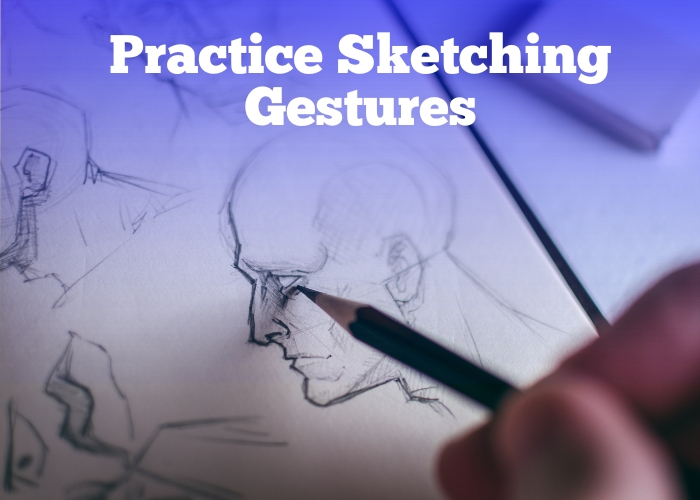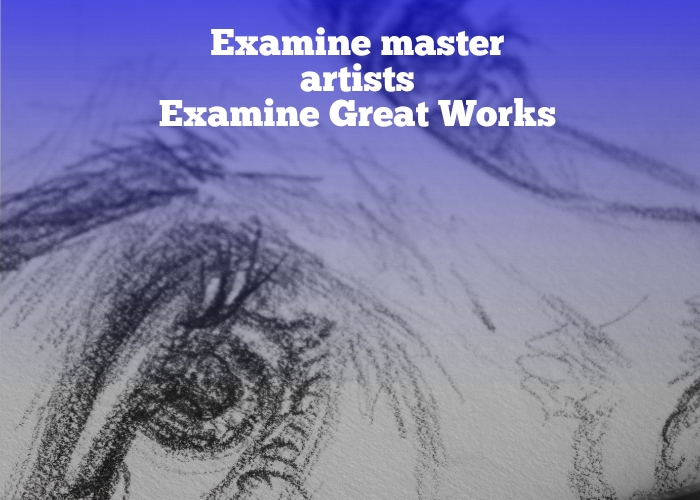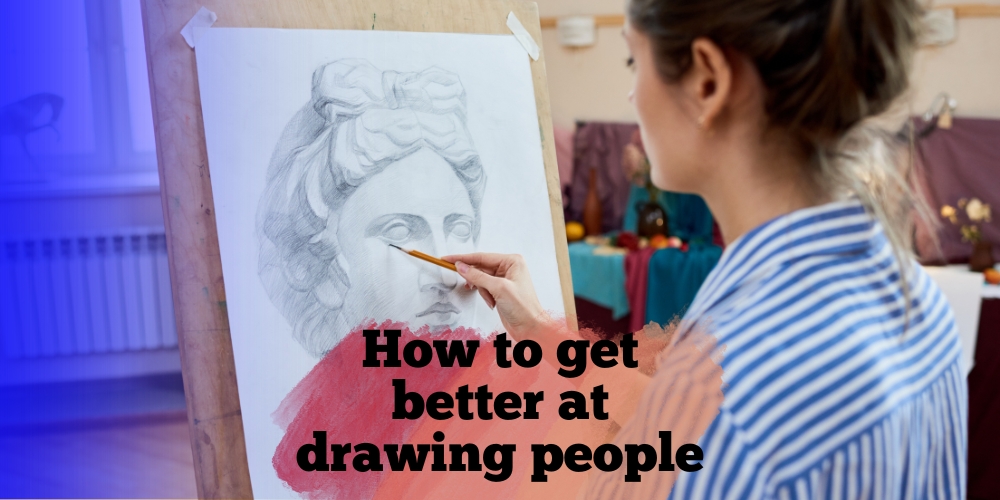The human face and form have served as the subject matter for some of history’s most famous art pieces. And who doesn’t enjoy a nice selfie, let’s face it? Suppose you’re a novice artist like myself. In that case, you can do a few things to accelerate your portrait drawing success, such as understanding how to approach your routine and picking up advice from seasoned artists who have spent decades honing their skills.
Therefore, if you feel that your drawing abilities are stagnating, I offer some advice in this post that I have picked up by studying art books, attending art classes, observing other artists in action, and, most importantly, practicing. These methods have enabled me to become more proficient at drawing faces quickly.
How to become more proficient at sketching portraits
Based on my personal experience, we should split down portrait painting into these eight sub-skills that we need to acquire to become faster artists actively:
- Start With Less Complex Aircraft
- When drawing the head, use basic proportions;
- Go deep
- Begin with basic structures and
- Construct a Gestural Framework
I go over drawing exercises and advice that have helped me improve at each of these eight portrait drawing techniques in the following parts.
Using Simplified Aircraft
By removing extraneous details and reducing the numerous forms to a small number of fundamental planes, you can simplify the structure of a human head drawing. After you better understand the skull, you can expand on those essential illustrations. –Paul Leveille
Employ Basic Proportions When Sketching the Head
Although every adult head is unique, starting your drawing with basic proportions will provide you with a stable base from which to work each time you begin a new piece. This is true regardless of the specifics.
- The eyes are roughly positioned from top to chin in the middle of the head.
- The eyes are approximately the breadth of an eye.
- Halfway between the chin and the eyebrows is the bottom of the nose.
- The horizontal lines of the nose and the eyebrows indicate where the ears are located.
- Approximately two-thirds of the way up from the chin, the mouth is positioned between the nose and chin.
Note how the ear is positioned as the profile’s center line. –Paul Leveille
Go Deep
It’s critical to comprehend how the skeletal system beneath the skin affects the topography of the human body.–Mariano Robinson.
Begin Using Simple Structures
It is crucial to consider the human figure in terms of primary forms since it is from these forms that the major masses are formed, which in turn influence the external shape and the internal gesture of objects. You can achieve believable foreshortening by simplifying the figure to geometric outlines. –Barrett Robert
Construct a Gestural Framework
Sketch in the gestures to build the figure, just like you would with any other artwork. You can better capture the general idea of the figure by sketching fluid gestures. –Barrett Robert
A few crucial pointers and methods:
This tutorial will review essential methods, strategies, and exercises to help you improve as a personal illustrator.
Recognize Human Anatomy
Examine the Fundamentals
Learn the fundamentals of the human body’s construction first. Learn the names of the major muscle groups and the skeleton. Understanding the fundamentals will enable you to appropriately show the body in various stances and comprehend how it moves.
Make Use of Reference Resources
Using anatomy books, online guides, and reference photos to understand the human shape. Posemaniacs and Quickposes are two websites that provide a range of positions and viewpoints for practice.
Master Ratios
Ratios of Head to Body
The head-to-body ratio is a popular recommendation, usually in the range of 1:7.5 to 1:8 for people. Gain experience sketching figures with these proportions to help you create realistic and balanced drawings.
Equivalent Landmarks
Find out where the hips are, where the knees are midway between the hips and the feet, and where the elbows line up with the waist when the arms are at the sides, which are some of the critical anatomical landmarks of the human body.
Practice Sketching Gestures

Fast Sketches
Sketching the human body quickly and loosely is the practice of gesture drawing. This exercise assists you in capturing the spirit and motion of a pose without being mired in the specifics.
Time-Restricted Activities
As you draw poses, set a thirty to two-minute timer. This motivates you to concentrate on the figure’s general dynamics and flow.
Pay Attention to Faces
Fundamental Ratios
Recognize the basic proportions of the face:
- The mouth is halfway between the nose and the chin.
- The eyes are usually halfway down the head.
- The bottom of the nose is halfway between the eyes and the chin.
Specific Features
Practice illustrating every face feature separately. Take some time to learn about the forms of the eyes, nostrils, mouths, and ears and how they fit together on the face.
Improve Your Shading Abilities
Shadow and Light
Find out how light affects the human body. Examine how highlights and shadows define a body’s outlines and provide depth to your drawings.
Techniques for Shading
Try out several shading methods, such as blending, cross-hatching, and hatching. Practice producing diverse textures and fluid transitions.
Make the Most of Technology
Electronic Instruments
You may enhance your drawing abilities using programs such as Photoshop, Procreate, and Clip Studio Paint, which provide many tools. Without worrying about making mistakes, try new things and learn by utilizing features like layers and undo.
Tutorials & Courses Online
Numerous tutorials from seasoned artists are available on websites like Skillshare, Udemy, and YouTube. These can offer insightful information and valuable methods.
Request Recommendations and Critiques
Participate in Art Communities
Participate in online communities such as ArtStation, DeviantArt, and Reddit’s r/ArtCrit to share your work and get helpful criticism from other artists.
Workshops and Classes in Art
Think about enrolling in online or live painting classes. Workshops and figure-drawing sessions can offer practical instruction and insightful teacher feedback.
Practice Regularly
Every Day Sketching
Make it a daily ritual to sketch. Over time, even a quick session every day can result in noticeable progress.
Assign Tasks
To stay motivated and focused, participate in drawing challenges such as Inktober or set monthly objectives for yourself.
Examine master artists

Examine Great Works
Recreate and Acquire Knowledge
Examine the creations of revered modern painters and masters like Michelangelo and Leonardo da Vinci. Their methods,how they represent the human shape, and how they use light and shadow.
To comprehend their techniques, try to copy their drawings. This helps you create your style and provides insight into their working methods.
In summary
Drawing people is a skill that requires effort, commitment, and time to master. You can advance significantly in your artistic journey by learning about anatomy, grasping proportions, drawing gestures, concentrating on faces, honing shading techniques, utilizing technology, getting feedback, practicing frequently, and researching great artists.

